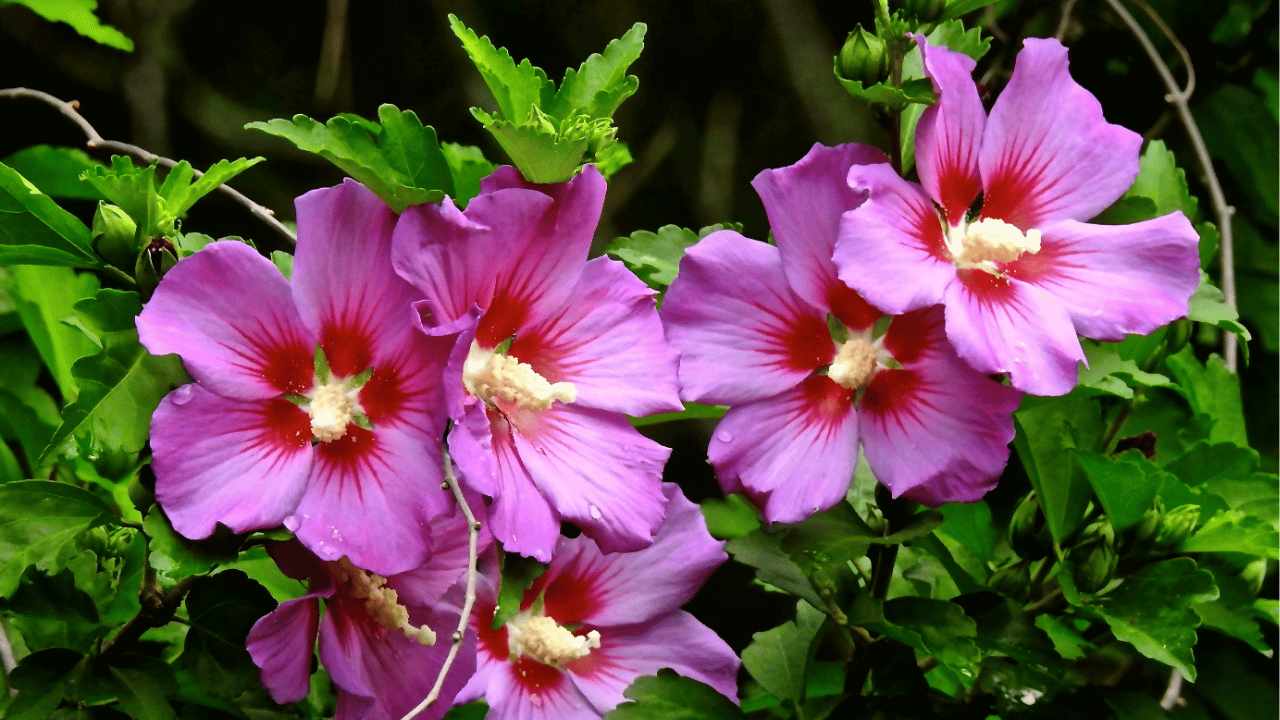Rose of Sharon (Hibiscus syriacus) is a hardy, resilient shrub that adds vibrant beauty to any garden. However, like all plants, it thrives when given the proper care and attention. Whether you’re aiming to enhance its blooms or ensure long-term health, mastering a few specific care practices will make all the difference. Below are 10 vital tips to help your Rose of Sharon flourish beautifully.
1. Prune at the Right Time
Pruning your Rose of Sharon is crucial for its health and bloom production. The best time to prune is in late winter or early spring when the plant is still dormant. This helps prevent sap loss and encourages robust growth in the new season.
When pruning, remove any dead or weak branches to stimulate stronger ones. Cutting back about one-third of the older wood encourages a fuller, bushier appearance. Avoid pruning in late summer, as this can lead to fewer flowers in the following year.
2. Water Consistently, But Don’t Overwater
While Rose of Sharon is drought-tolerant, it still benefits from regular watering, especially during hot, dry spells. Deep watering once a week ensures the roots get the moisture they need, which supports bloom production and prevents stress.
However, overwatering can cause root rot. To avoid this, ensure the soil drains well and doesn’t remain soggy. Water in the morning, allowing the soil to dry out throughout the day, reducing the risk of fungal diseases.
3. Choose Well-Drained Soil
Proper soil drainage is essential for the Rose of Sharon’s health. It prefers slightly acidic to neutral soil with good drainage to prevent waterlogging, which can lead to root problems. If your garden has heavy clay soil, consider amending it with compost or sand.
You can also plant your shrub in a raised bed if drainage is a concern. Monitor your soil’s condition regularly, as compacted soil can hinder root growth and negatively affect the plant’s overall vitality.
4. Mulch to Retain Moisture
Applying a layer of mulch around the base of your Rose of Sharon helps regulate soil temperature and retains moisture during hot months. Organic mulches like bark or shredded leaves also enrich the soil as they break down.
Be sure to leave a gap around the stem to prevent rot. A 2-3 inch layer of mulch will also suppress weeds, reducing competition for nutrients and allowing your plant to thrive in its space without unnecessary stress.
5. Fertilize Regularly
Rose of Sharon benefits from light feeding, particularly in spring when new growth begins. Use a balanced, slow-release fertilizer, such as a 10-10-10 formula, to provide essential nutrients throughout the growing season.
Avoid over-fertilizing, as this can lead to excessive leaf growth at the expense of blooms. Applying compost annually is another excellent way to enrich the soil with nutrients while maintaining a more organic approach to fertilizing.
6. Provide Full Sun for Best Blooms
For the most abundant blooms, plant your Rose of Sharon in a location where it will receive at least 6-8 hours of full sun daily. Although it can tolerate partial shade, fewer flowers will appear without adequate sunlight.
If your plant is in a shaded area and not blooming well, consider transplanting it to a sunnier spot in the garden. The increased sunlight will not only improve blooming but also strengthen the plant’s overall structure and resistance to disease.
7. Watch for Pests
Though Rose of Sharon is relatively pest-resistant, it’s still susceptible to common garden pests such as aphids, Japanese beetles, and spider mites. Regularly inspecting the leaves and stems can help you catch infestations early.
For minor infestations, a strong spray of water or insecticidal soap can keep pests at bay. For more significant problems, consider using neem oil or introducing beneficial insects like ladybugs to naturally reduce pest populations.
8. Space Plants for Airflow
Proper spacing between Rose of Sharon plants is essential for ensuring good airflow, which helps prevent fungal diseases such as powdery mildew. Space the shrubs at least 6-10 feet apart, depending on the variety and your garden’s conditions.
Avoid overcrowding your garden, as it can lead to issues with ventilation. When planting, consider the mature size of the shrub, as tightly packed plants will struggle for light, nutrients, and air circulation, leading to reduced health and flowering.
9. Deadhead Spent Blooms
Removing spent blooms, or deadheading, not only improves the plant’s appearance but also encourages further flowering. By removing these faded flowers, the plant conserves energy that it would otherwise use to produce seeds.
Use sharp pruning shears and cut just above a set of healthy leaves. While Rose of Sharon naturally drops its flowers, regularly deadheading will ensure a longer blooming season and a tidier, more attractive shrub.
10. Protect from Harsh Winter Conditions
Although Rose of Sharon is hardy, protecting it from harsh winter winds and extreme cold is beneficial, especially for young or newly planted shrubs. Applying a thick layer of mulch around the base in late fall can help insulate the roots.
In colder climates, consider wrapping the shrub in burlap to shield it from drying winds. This added protection helps prevent dieback and ensures your plant emerges healthy and ready to grow when spring arrives.

